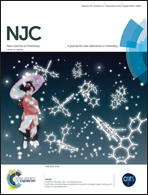Achieving accelerated osteogenic differentiation via novel magnesium silicate hollow spheres†
Abstract
Nanomaterials have been widely used as multifunctional scaffolds and carriers in bone tissue engineering resulting from their versatile functionalities. Here, a classical Stöber method that combined the merits of an organic reagent-free hydrothermal route was introduced to rationally design and synthesize novel magnesium silicate hollow spheres (denoted as MgSiO3 hollow spheres). Due to the presence of mineral elements including silicon and magnesium, these well-prepared hollow structures exhibited positive effects in accelerated osteogenic differentiation. By using an osteoblastic cell line as example, namely MC3T3-E1, we investigated the in vitro toxicity of these hollow spheres via various classical methods including MTT assay, LDH assay, apoptosis, and morphology observation. Results indicated that these materials revealed extremely low systemic toxicity and high bio-compatibility. Moreover, cellular internalization observation demonstrated that these hollow spheres could be taken up by MC3T3-E1 cells in a time-dependent manner. This vigorous process of endocytosis could provide more raw materials for the following intracellular mineralization and bone regeneration. Results of ALP analysis and alizarin red staining indicated that these hollow spheres could clearly promote osteoblast differentiation and mineralization in a dose-dependent manner. Our study suggested that these magnesium silicate hollow spheres could act as promising candidates for enhanced bone regeneration and bone tissue engineering.


 Please wait while we load your content...
Please wait while we load your content...